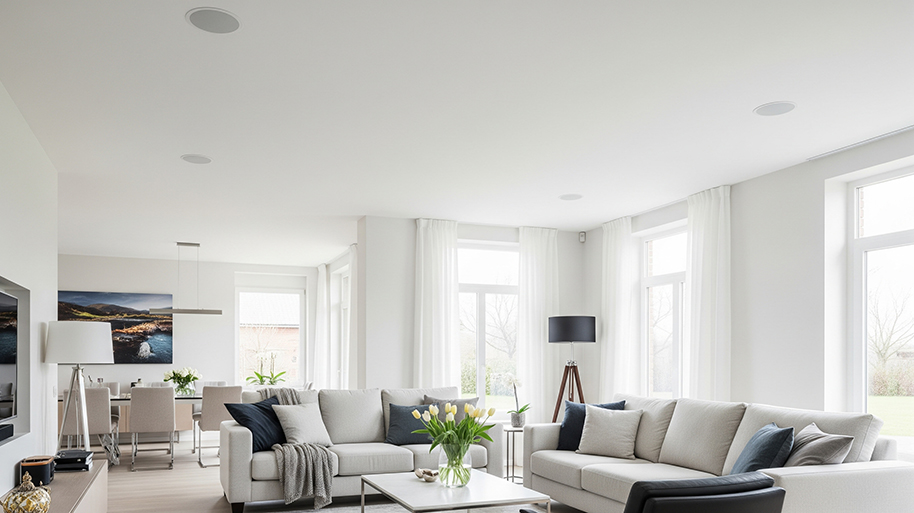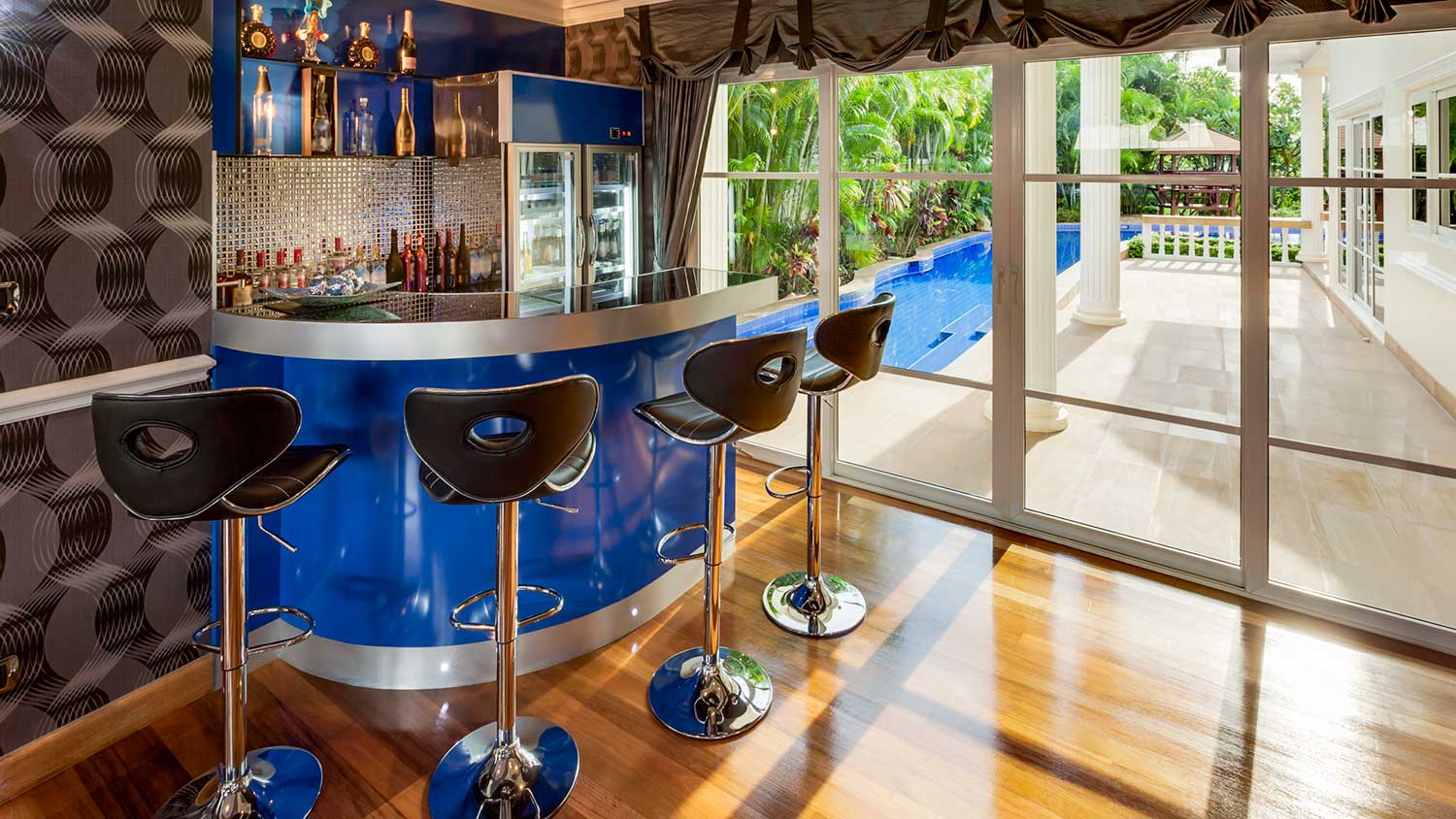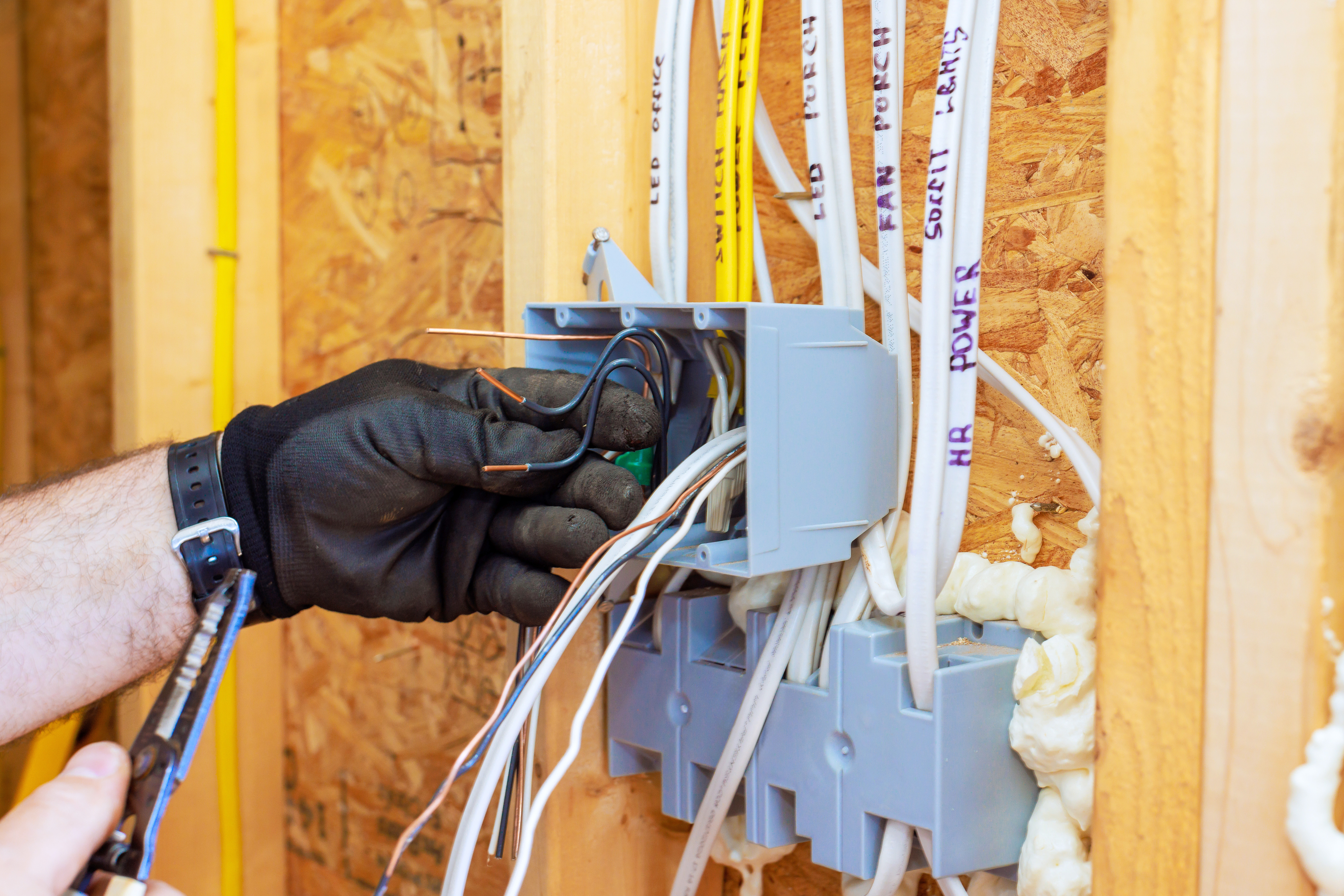
Whether you DIY or go with a pro will determine your ceiling speaker installation cost. Follow this guide to help you budget for your home audio project.
Here’s everything you need to know to build the perfect space


Hire an electrician to ensure your home can power your arcade.
Protect games from sunlight, moisture, extreme heat, and extreme cold.
Keep interior design in mind as you select a color scheme and decor.
Create a multipurpose space that your whole family can enjoy.
Buy your arcade games from collectors or reputable dealers.
Many homeowners fondly remember popping quarters into games in colorfully lit classic arcades. If you’re dreaming of recreating those memories in your own home arcade game room, use this guide to plan it right. The right vision and plan can make all the difference between a room filled with games and a game room that your family and friends love spending time in.
Consider the following before you start building an arcade in your home.
Arcade games can be rather large, so space will be at a premium. Check the dimensions of any games on your to-buy list and ensure you have enough clearance on doorways and stairwells to get them inside. Arcade cabinets often weigh 300 pounds or more and can be more than 5 feet tall and 2 to 3 feet wide.
Typical arcade games each require 1 1/2 to 3 amps of power, while a pinball machine requires three to five amps. Most homes have a 20-amp circuit, although this varies by age.
If you’re planning a large game room with several games, consult a local electrician to assess your electrical needs and whether your home can handle the burden. It’s also important to invest in a high-quality surge protector rated to handle the required amps of all games connected to it.
Consider the indoor climate for your game room, especially if it’s in a finished basement or unused garage. Electronics require a consistent temperature as well as humidity levels below 90 percent to prevent erosion of electrical components. Use casters or rolling wheels to keep games off the floor in case of a water leak.
Also, UV rays from the sun can fade and dull arcade game screens and artwork. If your space has windows that allow direct sunlight, cover or tint them to help preserve your collection.
Once you’ve got a good space for your arcade, prevent it from becoming just a space full of games. Create a cohesive design just as you would in any other room of your home, and take the time to make it unique with creative touches that express your personality. Here are some ideas to get you started.
One approach is to create a theme around a passion you have, whether it’s a video game character, sports team, or music group. Create a color scheme and choose consistent decorations that revolve around the theme. This can include wall art and custom decals.
Part of what drives many homeowners to create home arcades are fond memories of arcades they’ve enjoyed spending time in. Capture that image with wallpaper or paneling that mimics an old arcade or industrial brick feel. Arcades tend to be dimly lit, so use blacklight carpeting or rugs, neon lights, and unique signage to brighten up the space just the right amount.

While your passion for gaming may be the central focus of your home arcade, you also want it to be a space that your family and friends will enjoy spending time in. Consider adding a comfy seating area, a projector screen for a home theater, or create a small bar area with a mini-fridge.
If your arcade is taking up residence in a multipurpose guest room, you’ll want to ensure that you design your space so it’s still comfortable to sleep when not in use for gaming.
Many costs go into building a home arcade. Start with the cost to hire an electrician to assess your space, which averages about $300 but can vary depending on whether additional work is needed.
The most important component of an arcade, consider where you’ll buy your games. Collectors can be a good source for used games because they tend to care for their items. Otherwise, shop only from reputable dealers with good reviews to ensure that you’re buying games in proper working order.
Full-sized gaming cabinets dating back to the 1980s vary in price, but you should expect to spend a minimum of $400 per cabinet. Custom-made cabinets programmed with multiple classic games range in price based on features, but the average cost is $2,300 to $5,000. These offer the most bang for your buck with the potential to emulate hundreds of games.
Retro arcade cabinets aren’t the only games you might want in your arcade. Here are some additional game room ideas and the costs you can expect:
Pool table: $700–$11,000
Game consoles: $100 or more
Dartboard: $25–$100 or more
Air hockey table: $500–$1,400
Finally, you’ll need to consider the cost of any renovations or decorating. Many stylish decor items like neon lights and novelty wall decor can be purchased inexpensively from online retailers. For example, here are some other ideas for decor and the prices you may find:
Arcade-style blacklight area rug: $80
4-foot-by-8-foot brick wall paneling: $50 per sheet
Gaming-themed neon signs: $10–$30
Black paint for walls and ceilings: $20–$30 per can
Home bar: $400
From average costs to expert advice, get all the answers you need to get your job done.

Whether you DIY or go with a pro will determine your ceiling speaker installation cost. Follow this guide to help you budget for your home audio project.

Discover the average surround sound installation cost, key price factors, and tips to save. Get expert insights to plan your home audio project.

Explore home theater installation costs. Get detailed breakdowns, cost factors, and expert tips to help you budget and plan your dream home theater.

Discover the average cost of home theater wiring, including labor, materials, and key factors that impact your total price. Learn how to budget and save on your project.

Discover the cost to install a projector and screen in your home, including price ranges, installation factors, and tips to help you plan your home theater project.

For a clean and safe installation, hire someone to mount the TV on the wall. Know how to prepare and what questions to ask before you call a pro for help.